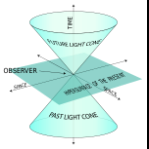Leaderboard
Popular Content
Showing content with the highest reputation on 01/23/22 in all areas
-
Seems simple enough to me ... It is Australia's house, and they have the right to determine who they let in. And yes, they even have the right to change their minds.2 points
-
It is like saying that folks should be allowed to be drunk driving. Y'all got airbags after all. It makes no sense.2 points
-
I propose it because I don't know and I don't have an opinion, and I'd like to hear opinions and to learn arguments from others. I am proposing it on discussion board, not to a board of directors of SpaceX or NASA2 points
-
Once on the air of the radio station "Echo of Moscow" in a program about science, which is led by mathematician Andrey Konyaev, I heard a list of requirements for new theories. 1. There should be no internal contradictions in the new theory. 2. The new theory should not contradict the data from experiments and observations. 3. A new theory should not contradict existing recognized scientific theories. I have a question, why is item 3 on this list? It seems superfluous to me. After all, if a new theory contradicts an existing theory where the existing theory is confirmed by experiment or observations, then paragraph 2 is sufficient. And if a new theory contradicts the existing one in the field of predictions that have not been tested experimentally, then perhaps this should be a reason for further checks, and not for rejecting the new theory.1 point
-
https://phys.org/news/2022-01-nets-bycatch-sharks-wildlife-fishing.html Lighted nets dramatically reduce bycatch of sharks and other wildlife while making fishing more efficient: In a win-win for commercial fisheries and marine wildlife, researchers have found that using lighted nets greatly reduced accidental bycatch of sharks, rays, sea turtles, and unwanted finfish. Publishing their results in the journal Current Biology, the researchers found that lighted gillnets reduced total fisheries bycatch by 63 percent, which included a 95 percent reduction in sharks, skates, and rays, an 81 percent reduction in Humboldt squid, and a 48 percent reduction in unwanted finfish, while maintaining catch rates and market value of target fish. Authors of the study include Jesse Senko, Assistant Research Professor, Arizona State University; Hoyt Peckham, Director of Small-scale Fisheries, Wildlife Conservation Society; Daniel Aguilar-Ramirez, Fisheries Biologist, National Fisheries and Aquaculture Institute of Mexico; and John Wang, Fisheries Ecologist, NOAA Fisheries. Gillnets are one of the most extensively used fishing gear in coastal regions throughout the world's oceans, but often catch other animals not targeted by fishers. These include endangered, threatened, and protected species such as sharks, sea turtles, marine mammals, and seabirds, but also other fish species as well as non-marketable juvenile target fish species. These animals are often dead, injured, and dumped overboard. The incidental capture of non-target species—known as "bycatch"—in coastal gillnet fisheries has contributed to declines in endangered species worldwide and has also impacted coastal ecosystems. Over the past decade, illuminating gillnets with LED lights has emerged as an effective tool to reduce bycatch of endangered sea turtles in coastal gillnet fisheries. However, the effects of net illumination on other vulnerable species, total fisheries bycatch, and efficiency of fishery operations have never been examined. more at link................... the paper: https://www.cell.com/current-biology/fulltext/S0960-9822(21)01737-1?_returnURL=https%3A%2F%2Flinkinghub.elsevier.com%2Fretrieve%2Fpii%2FS0960982221017371%3Fshowall%3Dtrue explore further...................... https://phys.org/news/2019-12-fishing-nets-turtles-dolphins.html Lights on fishing nets save turtles and dolphins: Placing lights on fishing nets reduces the chances of sea turtles and dolphins being caught by accident, new research shows. LED lights along the top of floating gillnets cut accidental "bycatch" of sea turtles by more than 70 percent, and that of small cetaceans (including dolphins and porpoises) by more than 66 percent. The study, by the University of Exeter and Peruvian conservation organisation ProDelphinus, looked at small-scale vessels departing from three Peruvian ports between 2015 and 2018, and found the lights didn't reduce the amount of fish caught from "target species" (ie what the fishers wanted to catch). The findings support previous research which suggested LED lights reduce bycatch of seabirds in gillnets by about 85 percent. more at link.............1 point
-
Except you said this: We we now seem to agree is patently false. Individual health decisions have population level consequences, especially when it comes to infectious disease and vaccines. We know that cohorts where all individuals have two doses of either BNT162b2 or ChAdOx1 vaccine display approximately half the R0 of unvaccinated cohorts. Given the stratified risk of hospitalization and mortality, vaccination rate has a significant correlation with morbidity and mortality for even relatively small populations. The relative individual risk of adverse vaccine side effects, along with the overall public health burden of vaccine side effects is several orders of magnitude lower than that of Covid19. So you can't really argue from a logical or mathematical perspective that the the relative impact of Covid19 vaccination refusal is lower than the risk of the vast majority of other freedoms that are legislatively curtailed for the public good, nor that the individual burden of being vaccinated is unprecedentedly high. Given the above relative risk model, I don't think Djokovic's right to be phenomenally bad at math trumps the right of others to travel internationally without unnecessary exposure to an unprecedentedly deadly infectious disease. Djokovic has right to not get vaccinated, but it comes with the consequence of restricted travel to foreign countries, and other curtailments on his full participation in society, because his decision does effect others. Also, I think over the last 250 years or so, most societies have determined that vaccination against infectious diseases falls within that realm of obligation should one wish to fully participate in said societies, which led to a subsequent doubling of average life expectancy in said societies.1 point
-
"Same time" in which reference frame?1 point
-
1 point
-
No. I'm talking about Australia. EVERYONE in Australia is at risk. The people in Australia who do not have access to the vaccine, the people in Australia who cannot take the vaccine due to their health, the people in Australia who choose not to take the vaccine, and the people in Australia who are vaccinated. Not to mention the mental health of health workers, the financial health of the health system, the emotional health of family members who die... I find it shocking that at this point in the pandemic, a member of this site is so woefully ignorant of the basics of the vaccine and the risks of the virus to the population. Unless you are suggesting he came to Australia for any reason other than to play tennis, it is his tennis choices they impacted. As he did not take the vaccine at their urging I cannot imagine how they impacted his health choices.1 point
-
Who knows then? Maybe he meant that a new theory has to be an extension of an existing recognized theory having it as an approximation / limiting case / subdomain / ...1 point
-
The same answer as before: "to give life a chance to go on after there is no more chance on Earth." Maybe if you rephrase your question, I'll understand why this answer doesn't answer it.1 point
-
1 point
-
Don't be silly. Erik2014 would have got patents on the idea, and would be churning out thousands of evaporation/condensation generators by now. I'm surprised I haven't seen them in the shops. The prior disclosure will make it impossible for bestchance to make any money out of the invention though. Once you've made your idea public, it becomes public property, without a patent.1 point
-
It's funny to see the religious right marching for an individual's right to make their own health choices, when around the world they try to ban women from deciding for themselves whether to terminate a pregnancy or not. Giving birth is a bit more life changing than having a little prick in the arm. I do think that the Aussies made a mess of this though. I can't believe that the original visa application didn't "go upstairs", with the name Novak Djokovitch on it and a claimed exemption to vaccination. At what level was the visa application allowed? If the visa had been denied in the first place, nobody would have been that surprised. But to grant it, and let someone travel halfway round the world, before pissing about at the border doesn't really put the country in a good light. No sympathy for Djokovitch though. Anti-vaxxers are morons, who lack the will or ability to weigh evidence properly. And I didn't know about the lying on the application till later. I still don't know exactly what that was about. But I do have my doubts whether he ever actually ever had covid, as he claimed. It looks very suspiciously like that was a story to get round the vaccine requirement.1 point
-
I was wrong. Sorry. Thank you for your attention.1 point
-
Or that maintaining a pool of infected increases the chance of new variants (I mean that has only been the driver of at least three waves...). Or increase the risk of folks for which vaccines won't work, or that filling up hospitals and thereby restricting health care is bad for everyone etc, etc. I keep being astonished that 2 years into a crisis of this magnitude folks are able to learn nothing.1 point
-
What for? So we can get credit (from whom?) as intelligent designers? Shouldn't we rather let the promising worlds work out their own fertility issues? But that's an ethics question, not an evolution question. Only if 'we' take all the other life forms on Earth with us. That's unlikely. Most of them, sure; probably not all. So this planet can still have a second chance. Better yet, suppose we stop short of mass extinction?1 point
-
I feel that way now. Every time another species goes extinct. I know extinction is a natural process, but what we are living through and causing is not natural, it's catastrophic.1 point
-
Good grief, no! No knowing where we could end up in a billion years or so. ETA In fact that could be us, the seeded archaea (with a sprinkling of bacteria) and our benign overlords watching developments until we are ready to be contacted I jest but Kipping is making his point using a timescale from abiogenesis to intelligence of a couple of billion years. I think the point that some sort of life (leaving stromatolites as evidence) of life starting very soon after water condenses on Earth is an argument for the inevitability of some sort of life arising, given the right environment. That second data point would be quite useful.1 point
-
! Moderator Note Actually, you started getting reported the minute you started side-stepping mainstream replies. Nobody wants to waste time on these same tired waffles, but you were at least civil about it, so the mods actually protected you from getting the boot earlier. We'll say bye bye and let you bow out gracefully now that your arguments are falling apart. Please remember to remove the refuted parts of your argument from future discussions, at other science discussion forums.1 point
-
I would like to draw out a few points being made in different ways by members and add some comments to them. Firstly I think it is important to distinguish between plagiarism at school and plagiarism at college or university. This is because at school pupils are forced to 'study' many subjects they have little or no interest in or use for. Once at college most (though not all) are studying for something they need, not something they want, in order to earn their living. To take the college situation first, one way to counter plagiarism is to separate the college exams from subsequent state exams that allow them to actualy practice their chosen profession. As a for instance, you can spend 3 - 5 years getting top marks (by cheating) pursuing a Batchelors or Masters in Pharmacy at one of several Universities in the UK. But you cannot practice until you have passed your 'registration' exam (which has a significant failure rate first time around). This exam has a rigorous anti cheating format including specifying a specific non memory, non programmable, calculator, no mobile phones, offsite exam centres etc. Essays are not required in this exam it is a test of competency. At school a pupil might have little knowledge, virtually no skill and absolutely no interest in a forced subject for example Music. Yet that pupil needs to obtain some minimum score. So is it little wonder they will take any route to gain this score, including cheating if the opportunity presents ? This situation has been present in schools since time immemorial.1 point
-
Just to correct myself. There are cases in which you can say an electron changes its spin, of course. But not for spin-entangled states. For example, you put an ion in an ion trap and subject it to a magnetic field. The ion will flip its spin. The devilish property of a maximally-entangled state is that you cannot say its spin has any particular value whatsoever. Yes, it's very much like that; they're initial correlations. The tricky part is that correlations are quantum. All hell breaks loose when correlations are quantum and you want to think about the gloves as actually possessing all these properties at a given time. Quantum mechanics embeds a different (non-classical) kind of logic when you express it in terms of properties you can measure. 'Quantum gloves' need to be able to occupy states that are neither right-handed, nor left-handed (superpositions); neither black nor white, etc. And we need to be able to measure several properties of the gloves. If we want to have properly quantum gloves and display all the 'trickery' of quantum entanglement, we would need: 1) Several measurable properties. Take three observables, say: handedness (H), colour (C), and material (M). 2) Measurements of any one of these properties (observables) completely mess up measurements of the other; and you can't measure (H,C), or (C,M), (H,M), at the same time. (Incompatible observables.) 3) (For simplicity) the observables have a discrete dichotomic spectrum (possible values when measured): H {left-handed, right-handed} C {black, white} M {natural, synthetic} 4) When the gloves are in a definite state of handedness, the H-incompatible properties C and M are maximally scrambled, or 'blurry': Equally likely to be black or white; equally likely to be natural or synthetic. The gloves simply don't have those C, M properties when H is well defined! If they had, it's not difficult to prove that, for many series of repeated experiments on a given glove: Probability(left-handed & white)+P(black & synthetic) greater or equal than Probability(left-handed & synthetic) This is called Bell's inequality, and it's just a consequence of the properties H, C, and M actually having a value. Quantum probabilities violate this inequality for certain choices of observables. But wait a minute. Didn't we say that properties H (handedness) and C (colour) are incompatible? How can I even make sense of Probability(left-handed & white)? I'm not supposed to be able to measure handedness and colour at the same time! (for the same glove). Yes, but the whole basis of this combined-probability setup is based on the assumption that when I measure, eg, H for one glove and the result is 'left-handed', I know with certainty that, were an experiment to be performed at the other glove's location, it would produce the result 'right-handed' with total certainty. And sure enough, it does, when I do so. So I'm counting 'left-handed' outputs for the other glove as 'right-handed' outputs for this glove. This is very important to keep in mind. So the gloves would have to be kinda schizoid. But the whole thing is local. In order to see that, let's go back to a pair of electrons. We take electrons from separate parts of the world, completely uncorrelated. We bring them together and have them interact. They reach a maximally entangled state called the singlet. This only happens because they've been proximal and interacting (local!!!). Now (and not before) they display perfect anti-correlation. If I perform my experiment on them when they're still next to each other, they display all the craziness that I've just described. Now the state decays (splits apart). I perform the same sequence of measurements. The perfect anti-correlation is still there. It hasn't changed. So it didn't come from me doing anything on one of the electrons and the other 'sensing' what I did. It came from the initial interaction that produced the anti-correlations. Murray Gell-Mann was very frustrated that people, decades after Bell, Clauser, Shimony, and all that saga, still called this 'non-locality'. Just as an indirect evidence of how much confusion this term 'non-local' has caused in physics, here's a quotation: (taken from a scientific forum.) Ooooooo-kay.1 point
-
Reading your comments, I think that your reading haven't reached to the end of (3) yet, or that you have a problem in reading comprehension. Please read enough before commenting. Sorry, I am not interested in discussing (1) and (2). Cardinal points of my model is (3)-(6). This is a good question. The most important point of my model is introduction of cohesive force. I am sorry, it is to dirty the traditional mathematically beautiful theory, which is to be only approximately true.-1 points
-
-1 points










